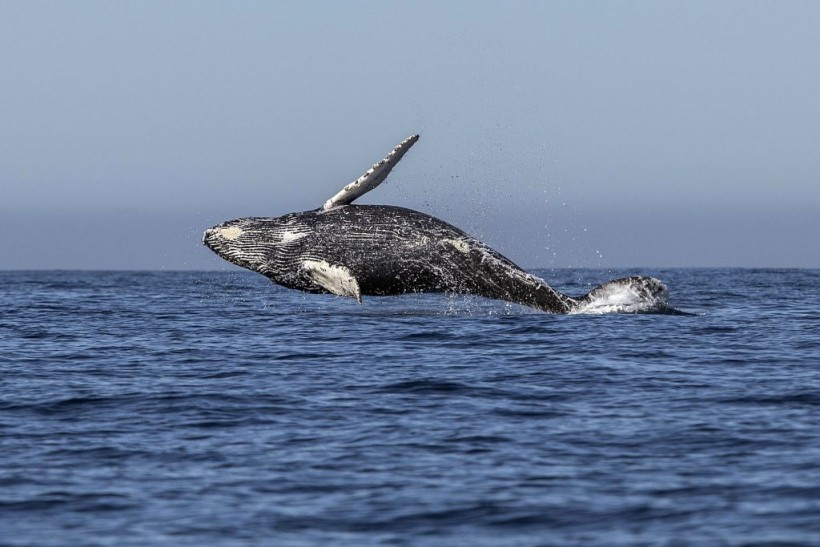A groundbreaking UN report published recently sheds light on the alarming decline of migratory species worldwide as a result of man-made threats such as pollution, invasive species, and the climate crisis.
The report, titled "State of the World's Migratory Species," emphasizes the urgent need for coordinated global action to protect these iconic animals and their critical habitats (via The Guardian).

TOPSHOT - A humpback whale (Megaptera novaeangliae) jumps out of the Pacific Ocean's waters in Los Cabos, Baja California Sur, Mexico on March 14, 2018. Despite a surge of violent crimes in popular tourist areas such as Los Cabos and Cancun, tourism is Mexico's third largest source of foreign exchange. In 2017 the country hit a new record -- 39.3 million tourists who generated $21 billion in business. / AFP PHOTO / FERNANDO CASTILLO
Migratory Species In Danger
Every year, migratory species such as humpback whales, nomadic fish, and soaring birds embark on long journeys across oceans, continents, and skies.
However, a new assessment by the Convention on the Conservation of Migratory Species of Wild Animals (CMS) reveals a sobering reality: more than a fifth of these species are now in danger of extinction.
The report paints a bleak picture of the challenges that migratory animals face, with 22% of CMS-listed species under threat of extinction.
Surprisingly, nearly all CMS-listed fish species are on the verge of extinction, with population declines of up to 90% since 1970. This includes iconic species such as sharks, rays, and sturgeons, which play critical roles in marine ecosystems.
Human activities such as overexploitation and habitat loss are identified as the primary drivers of decline for migratory species. Unsustainable hunting, overfishing, and habitat degradation are pushing these animals to the brink of extinction. Climate change, pollution, and invasive species further exacerbate these threats, posing significant challenges to species survival.
Read Also: Scientists Discover New Insect-Killing Worm, Promises Eco-Friendly Pest Control
Protecting Migratory Species
The report highlights the importance of protecting key habitats and migration routes for these animals. Currently, more than half of the Key Biodiversity Areas (KBAs) crucial for migratory species lack adequate protection, exposing them to further risks from human activities.
In light of these findings, experts are calling for urgent action to address the drivers of decline and protect migratory species. Strengthening efforts to combat illegal and unsustainable practices, expanding protected areas, and addressing climate change are among the key recommendations put forth in the report.
Despite the challenges, there are signs of hope. Successful conservation efforts have led to population recoveries for some species, demonstrating that concerted action can make a difference. However, the scale of the threat requires immediate and coordinated action on a global scale.
The Guardian tells us that the release of the report coincides with the UN wildlife conservation conference (CMS COP14) in Samarkand, Uzbekistan, where governments, wildlife organizations, and scientists are gathering to discuss conservation efforts. The report will provide valuable insights and recommendations to inform discussions and policy decisions at the conference.
The State of the World's Migratory Species report serves as a wake-up call to the global community. The fate of these iconic animals is in our hands, and urgent action is needed to ensure their survival for future generations.
Stay posted here at Tech Times.
Related Article: Observation of Great White Shark Birth Off California's Coast Stuns Researchers










